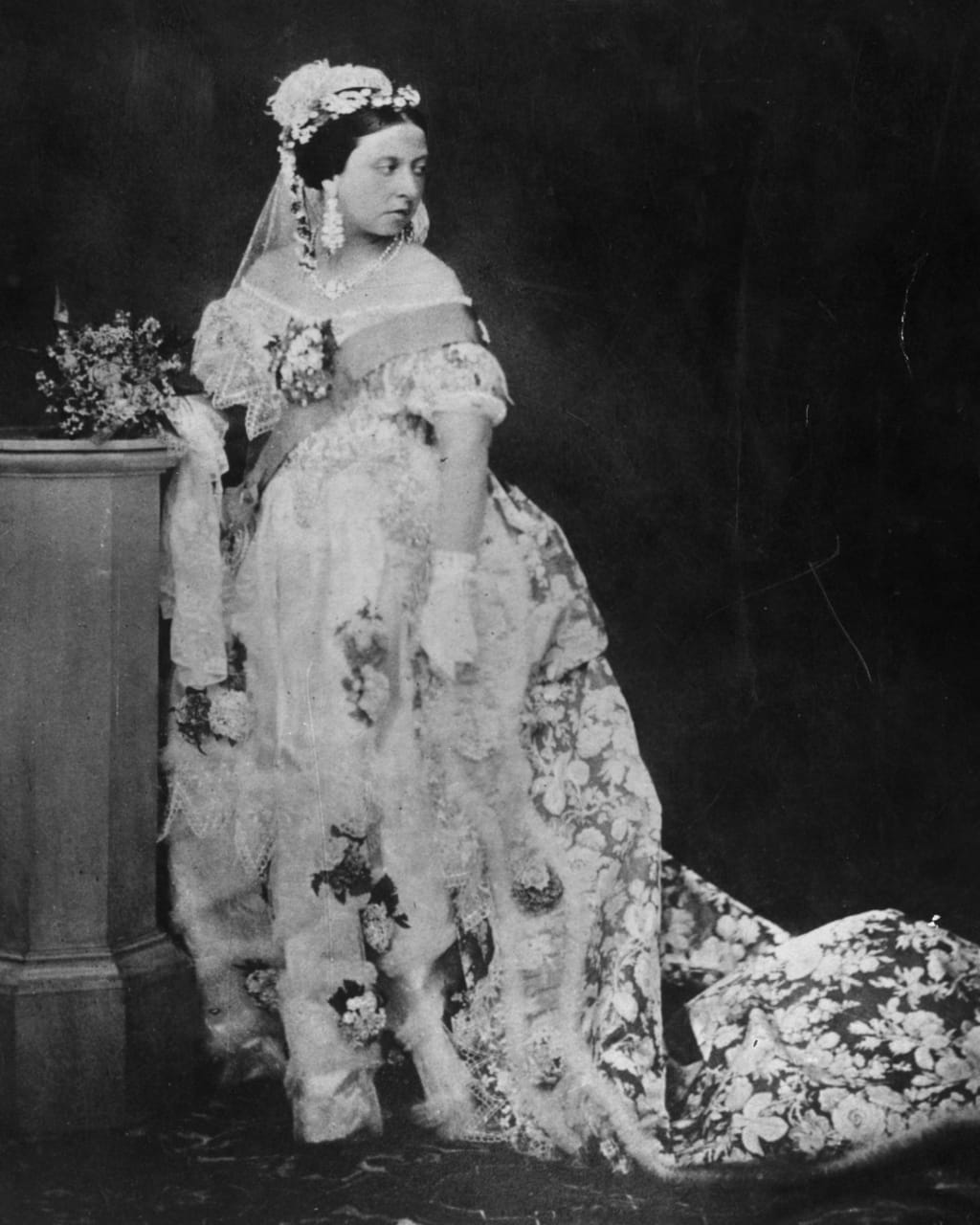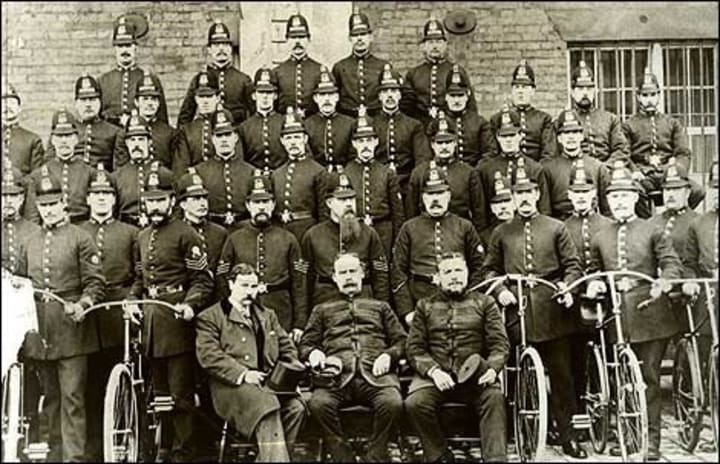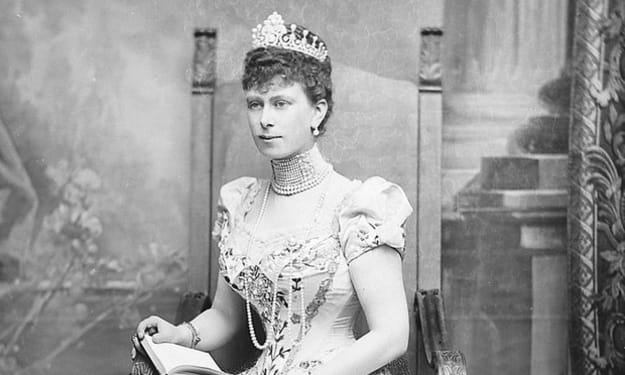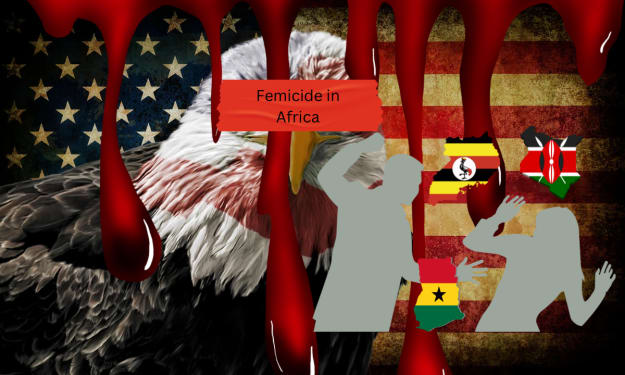
“A Golden Age” “A Golden Calm” “An Indian Summer” “A Long Afternoon”
“When she came to the throne coaches still ran; men wore stocks, shaved their upper lips and ate oysters out of barrels. Women said ‘La!’ and owned no property. Well-nigh two generations had slipped by --- of steamboats, railways, telegraphs, telephones, bicycles, electric light and now these motor cars. Morals had changed, manners had changed. The middle class (had been) buttressed, chiselled, polished, till it was almost indistinguishable from the nobility. (It was) an era that had canonised hypocrisy, so that to seem respectable was to be.” (Soames Forsyte reflects on Victoria’s reign, he was a character in “The Forsyte Saga” by John Galsworthy)
Queen Victoria reigned for 64 years, making her the second longest reigning monarch in British history, after our dear Queen Elizabeth II. During Victoria’s reign, life changed completely, almost within one generation. Back then, to be Victorian was to be “up-to-date,” and when we see how much life changed then, we can understand this. Gaslight ‘turned’ into electricity, the stage-coach ‘turned’ into the railway train, automobile and bicycle. New technology along with new knowledge created new opportunities, new wealth, politics and ‘attitudes.’ The very “way of living” underwent a revolution which has not been beaten (so far) --- the way in which we travelled / communicated / shopped / took care of our health / even preserved food --- all underwent a complete change!

A quote from Sir Walter Besant tells us: “To us, who find it difficult to stand outside and consider events in their true proportions, the period seems like a grand triumphal march. The changes are nothing short of a transformation. And no one regrets the change.” He captured the essence of Britain. Sir Walter Besant (1836-1901) was an English novelist and philanthropist, whose work describes the social evils of London’s East End, which helped to ‘set in motion’ movements to aid the poor or lower classes. His first independent novel “All Sorts and Conditions of Men” was based on his impressions of the East London slums. Besant co-operated in the establishment of the “People’s Palace” which was an attempt to provide education and recreation to the slum dwellers of the area. He wrote a long series of historical and topographical studies of London, 1902-1912. (Topographical = an accurate representation of the physical features of an area). Besant helped to found the Society of Authors and was knighted in 1895. Sir Walter Besant stood out as an author who wanted to make a difference and help his fellow man.
Medical problems were now being solved with science --- child-birth was becoming easier and safer, infant mortality was lowering and people were starting to live longer. Education was becoming more available to all “classes” of people which provided opportunities for self-improvement --- plus, there was now more ‘practical help.’ The ability to travel by train, or more cheaply by bicycle, opened the door for even the poorest to travel independently. The improvement within education meant that for the first time in history, a whole population was able to read. The Victorian belief was that “all difficulties could be overcome.” With this attitude, there would be a better society.

This Era also saw many wars. The Crimean War lasted from October 1853 to February 1856. Its immediate cause involved the rights of Christian minorities in the Holy Land, which was at that time, a part of the Ottoman Empire. Many viewed this conflict as a holy war. Britain, France and the Ottoman Empire all stood united against Russia and it took 11 months before a French assault forced Russia to evacuate Sevastopol. This city’s fall was the ‘symbolic end’ of the Crimean War. It is interesting to note that this is the first war to ‘feature’ battlefield photographs. It was this war that made Florence Nightingale famous as she tried to introduce cleanliness into the ‘war hospitals.’ Leo Tolstoy spent several months as an artillery officer. He wrote about his experiences and thus started his literacy career. When writing his now famous novel “War and Peace,” he would rely ‘heavily’ on what he had seen.
Literature came into its own during the Victorian Era. Sir Arthur Conan Doyle wrote the famous Sherlock Holmes series = starting in 1887 with “A Study in Scarlet,” this was the first of 4 novels. He also wrote 46 short stories about Holmes and Dr.Watson. Doyle was a British writer and a medical doctor, who had rejected the Catholic faith and had become an agnostic, later he became a spiritualist mystic. Another famous author was Charles Dickens. He wrote classics such as “Hard Times”, “A Christmas Carol”, “David Copperfield” and “Great Expectations.” He was a novelist, editor, illustrator and social commentator. Dickens has been lauded for providing a very real ‘picture’ of the Victorian lower-classes (for example, “Oliver Twist” and with this, he was able to help to bring about change. The 2nd of 8 children, Dickens family was not rich, his father falling into debt and being sent to prison when Charles was just 12 years of age. As a result, he had to leave school and found work at a boot-blackening factory earning 6 shillings a week to help support the family’s finances. Charles felt let down by the adults who were supposed to take care of him: “he wondered: how (he) could be so easily cast away at such a young age.” These experiences gave him a first-hand chance to see the life of the lower-classes, which he could put into his novels.
From 1st May to 15th October, 1851, there was The Great Exhibition of the Works of Industry of All Nations or “The Great Exhibition.” This was an international exhibition which took place in Hyde Park, London. The idea of the Exhibition was ‘dreamt up’ by Prince Albert (Queen Victoria’s husband), and it was to show the wonders of industry and manufacturing from around the modern world. There were 100,000 objects, showing along more than 10 miles, by over 15,000 contributors. The exhibits included many marvels of the Victorian age = pottery, porcelain, iron-works, furniture, perfumes, pianos, firearms, fabrics and even the odd house or two! Queen Victoria opened The Great Exhibition on 1st May, 1851.

It was at this time that wealthy Americans were marrying their daughters into the British aristocracy. It seemed that Britain was taking its cultural cue from the United States, as well as its money!
The standard of living --- for everyone --- was improving. Mass marketing, mass media and mass culture were all ‘inventions’ of this time. This, of course, brought about a much faster pace of life. A quote from the author Talbot Baines Reed sounds very much like the way we live today: “whatever we do we rush at. We bolt our food down, and run for the train; we jump out of it before it has stopped. We have no time to read books.” The more that ‘could’ be done, the more people ‘sought’ to do. This, though, started to bring greater stress into people’s lives.
Communication joined this faster pace of life. Winston Churchill is quoted as saying: “In England, you can in a few hours get an answer to a letter from any part of the country. Hence, letter writing has become short curt and ‘telegramatic.’ You may appreciate the present rapidity of correspondence, but you will hardly claim that modern style is an improvement.” Today, we use ‘emails’ and ‘texting’ and with both, very few spell correctly (it’s quicker to use letters --- ‘lol’ = laugh out loud).
Household appliances were changing how we cleaned our houses and the time took to clean the house. “Every sort of contrivance now lessens labour --- carpet sweepers, knife machines, bathrooms, lifts.” The Sphere, 1900.

The poor have always been with us, but in the Victorian Era this was a major problem. There were millions who were impoverished, barely able to earn a living or even destitute. We have to remember that the word ‘poor’ had a different ‘meaning’ back then, in fact, if certain ‘circumstances’ had not been written down, recorded for the future generation to read and learn from, we simply would not have believed it. The ‘labouring-classes’ often lived in lodging-houses, crammed together in rooms without any form of privacy. “The too frequent occurrence of necessitous overcrowding, where the husband, the wife, and young family of four or five children are cramped into a miserably small and ill-conditioned room --- there are numerous instances where adults of both sexes, belonging to different families, are lodged in the same room, regardless of all the common decencies of life, and where three to five adults, men and women, besides a train or two of children, are accustomed to herd together like brute beasts.” (Dr.Lethaby) The very real problem with this was that disease spread rapidly, especially as there was no means of removing sewage and vermin ran freely through the rooms. The Workhouse wasn’t that much cleaner. Children who belonged to the lower-classes, started to work from the very young age of five, and at the age of thirteen --- it was expected!
Work for the women of the working-classes could earn a living by selling flowers, foodstuffs, taking in washing or looking after other people’s children --- or by prostitution! Although this was deplorable from a moral point of view, it did give the women a certain independence. By working on the streets, the women could actually earn more money than most other occupations. Often, a young domestic maid who had been ‘ruined’ and dismissed, had no choice but to work on the streets. This, believe it or not, was safer than factory work. The work was repetitive, exhausting and lethal as most of the machinery was unprotected. Breathing in certain fumes killed ‘by degrees.’ Life was just a circle for these girls, who often ended up losing ‘everything’ through drink, which seemed to be their only release from a kind of ‘nightmare life.’
The ‘upper-classes,’ many of who had kind hearts, wanted to help their less fortunate ‘neighbours.’ Annie Besant was one such woman (1847-1933). Annie was an early advocate of birth control, much needed when some women were having over ten children. She was active in educational and humanitarian work and wrote many books and she also lectured extensively. Annie was a women’s rights activist and philanthropist. She even became involved in the London Match girls Strike of 1888. Annie may have come from a fairly wealthy family but she never ignored her ‘less-fortunate sisters.’ She was married to France Besant, the younger brother of Sir Walter Besant mentioned earlier.
It was at this time that William Booth founded the Salvation Army, a Christian organization which still helps ‘the less-fortunate’ today.

We know much about how the ‘upper-classes’ and the ‘middle-classes’ lived but few know the extent of the deprivations of the ‘lower-classes.’ It is to our credit as a nation, that things started to change and we now live in the ‘conditions’ in which we find ourselves today. No wonder the Victorian Era was called “A Golden Age.”
(My research comes from “A Brief History of Life in Victorian Britain” by Michael Paterson)

About the Creator
Ruth Elizabeth Stiff
I love all things Earthy and Self-Help
History is one of my favourite subjects and I love to write short fiction
Research is so interesting for me too






Comments
There are no comments for this story
Be the first to respond and start the conversation.